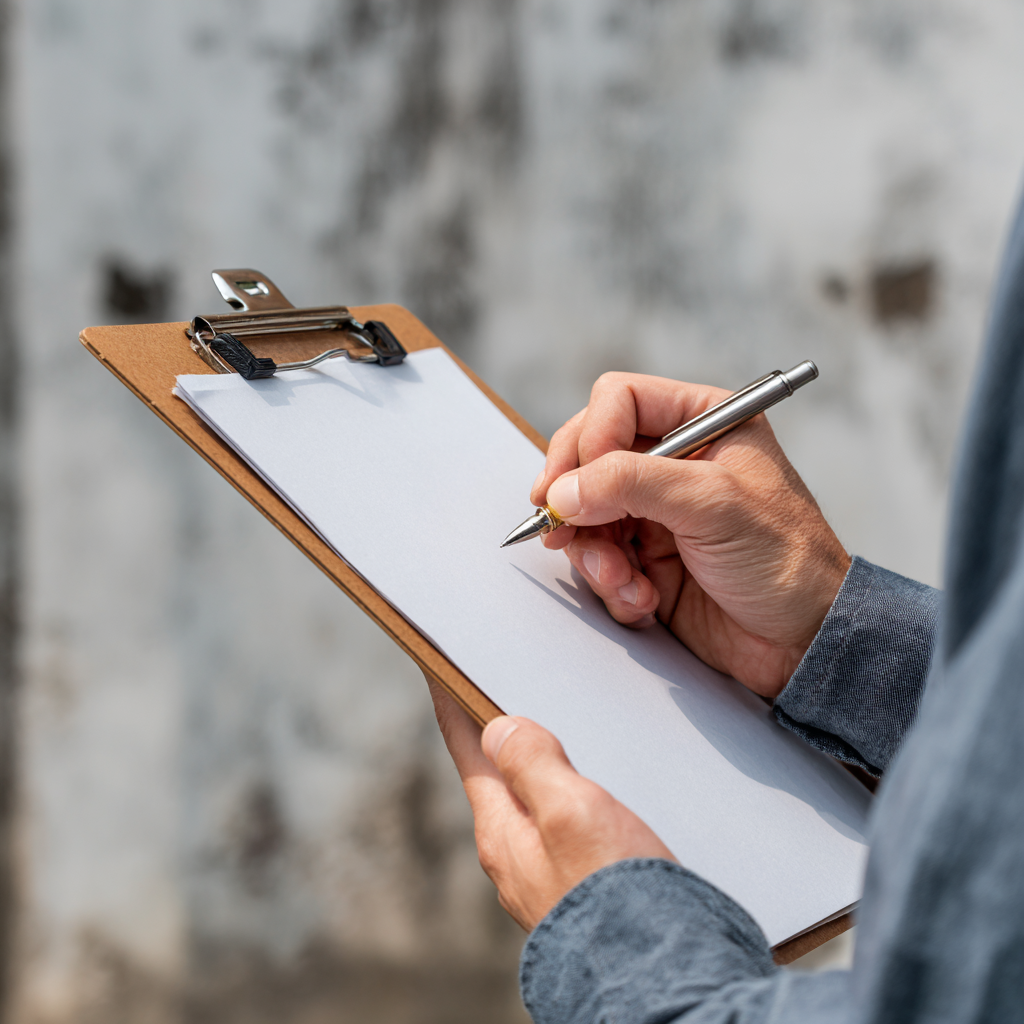Unstable conditions A symptom of life In mental and environmental change Atmospheric disturbance The feverish…
The Pen Top Peek

Ever wondered if you could peek into someone’s mind, not with magic, but with a bit of psychology and keen observation? As a mentalist, my tools aren’t smoke and mirrors, but perception and misdirection. One of my favourite, subtle techniques is figuring out what someone is writing before they’ve shown me a word. The secret lies in the humble pen.
The Subtle Tell: Pen Movement
The setup is simple. Ask a participant to write down a word, a number, or draw a small shape, instructing them to keep it hidden from your view. They usually hold the writing board against their chest or on their lap, doing their best to shield their work.
But here’s the secret: when a person writes, their focus isn’t just on the tip of the pen—it’s also on the exposed, non-writing end, the top. As they form a letter, the muscles in their hand and forearm transmit tiny, involuntary movements to the entire writing instrument.
Imagine the pen is a lever. When the tip moves in one direction to create a stroke, the top of the pen must move in a compensatory, mirrored, or angled way.
How to “Read” the Strokes
To perform this trick, you need to train yourself to focus not on the paper, but on the top millimeter or two of the pen that sticks up above their hand or from behind the writing board.
Here is what you are looking for:
- Straight Lines (like ‘T’, ‘I’, ‘L’, ‘1’, ‘7’): When a person writes a vertical line, the top of the pen will move straight up and down or hold a steady, near-vertical angle. For a horizontal stroke, the top will move in a straight, small arc side-to-side.
- Circles and Curves (like ‘O’, ‘C’, ‘S’, ‘8’, ‘3’): This is where it gets interesting. To draw a curve, the writer has to continually adjust the angle of the pen. The top will trace a very small, elliptical or rotational motion. You’ll see it wobble or circle slightly.
- Angular Shapes (like ‘V’, ‘M’, ‘W’, ‘4’): These involve a distinct, sudden change in direction. As they finish one stroke and start the next, the top of the pen will perform a sharp, small flick or pivot, often coming to a momentary pause before the next motion.
Practice Makes Perfect
This technique is incredibly subtle and requires practice, but it’s grounded in real mechanics:
- Start with the Basics: Have a friend write a single number, 1 or 8, while you watch the pen top. You’ll quickly learn the difference between the single up-down motion of the 1 and the continuous rotation of the 8.
- Move to Words: When they write a word, you’re looking to identify the sequence of movements. A word like CAT is easy because it begins with the curve of the ‘C’, followed by the straight lines of the ‘A’ and ‘T’. The transition between the curve and the line is the key clue.
- The Reveal: Once you’ve mentally “read” the motion—or at least narrowed it down—you can do a dramatic reveal. For example, if you see two large curves, a straight line, and another curve, you might confidently say, “I see… an ‘8’ and a ‘3’ written down, did you write ’83’?”
This trick succeeds because your participant is focused entirely on hiding the paper. They never consider that the movement of the writing tool itself is giving away the secret.

This Post Has 0 Comments